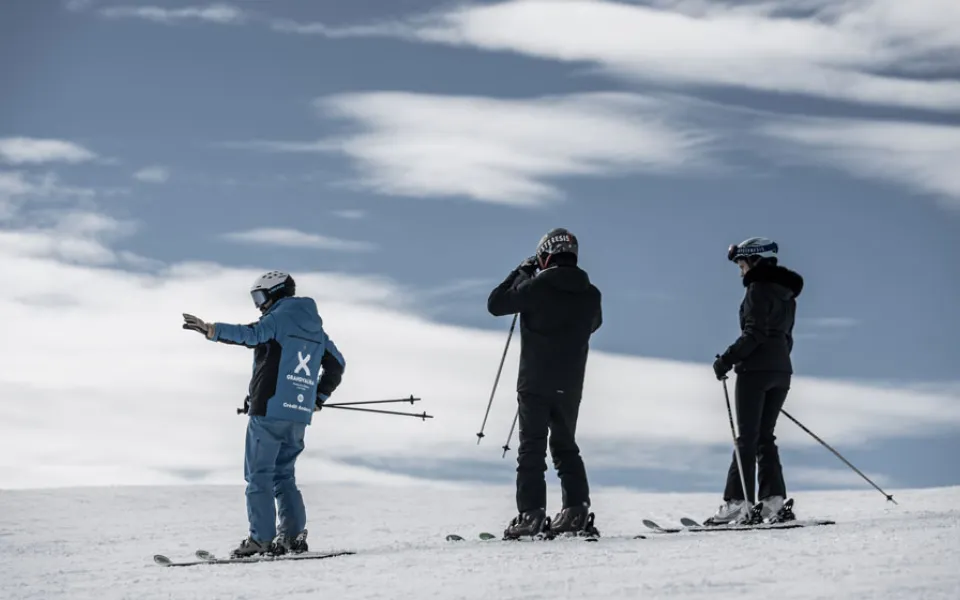 No matter whether you’re an experienced skier or attending a ski school in Andorra as a beginner, one thing is the same for everyone on the slopes and that’s ensuring you have the right safety equipment for skiing. And, one of the most critical pieces of gear to ensure your safety is a ski helmet.
No matter whether you’re an experienced skier or attending a ski school in Andorra as a beginner, one thing is the same for everyone on the slopes and that’s ensuring you have the right safety equipment for skiing. And, one of the most critical pieces of gear to ensure your safety is a ski helmet.
So, how do you choose the most suitable and best ski helmet? Well, in this guide to how to choose ski helmets, we’ll outline the main factors to consider when picking a ski helmet, including sizing, fit, and the differences between ski and snow helmets.
How to pick a helmet for skiing?
When selecting a ski helmet, you’ll want to consider factors such as comfort, style and cost, but the most important of all is the level of protection offered by the ski helmet. Depending on where you live and where you’re buying your helmet, there might even be an official safety certification which a ski helmet should meet, as is the case in most of Europe. This is worth checking to ensure you’re buying an effective ski helmet.
Another thing to consider when it comes to how to pick a helmet for skiing is that there are different types of ski helmets. There are three main categories of ski helmet, namely hardshell helmets, in-mold helmets and hybrid helmets. In the case of hardshell helmets, these have a thick and durable outer shell with a separate foam liner inside. While they are a little heavier, they are more robust and tend to be used by more aggressive skiers. With in-mold helmets, these are made by fusing a tough outer shell with an inner foam liner, and these are slightly more lightweight while still offering good protection. As for hybrid helmets, these combine both hardshell and in-mold technologies to offer a balance between high durability and high comfort.
If you’re going to be skiing in a more aggressive style and across more dangerous terrain, a hardshell helmet is usually the recommended one. That said, it’s worth trying on all three if you’re visiting an outdoor sports store, as getting a feel for each is a good way to choose a ski helmet.
How do I know my ski helmet size?
When it comes measuring yourself for your ski helmet, there is a fairly standardised ski helmet size chart based on the centimetre length of the circumference of your head. How do your measure the circumference of your head? Well, using a measuring tape, wrap it around the circumference of your head about an inch above your eyebrows, where the helmet will sit and note down the number. Make sure the tape stays level and wraps around the widest part of your head.
Then, see where your measurement fits into the ski helmet size chart of whichever manufacturer you’re looking to buy from. Each brand might define small, medium and large ski helmets slightly differently, but they will usually make it clear what centimetre ranges they’re referring to for each.
How tight do you want a ski helmet?
The fit of a ski helmet is critical for both comfort and protection, as a poorly fitting helmet won’t offer sufficient protection during a fall while an overly tight helmet will cause discomfort. So, what you’re looking for is a ski helmet that fits snugly around your entire head without feeling uncomfortable and without giving you a headache. When you put it on, you should feel even pressure all around your head.
You can also perform what’s known as “the shake test” to check if your ski helmet fits right. Once you’ve got a comfortable fit, shake your head and the helmet shouldn’t move on its own if it is the best ski helmet size for you.
The good news is that the best ski helmets come with an adjustable fit system, which will allow you to make slight adjustments up to a certain range. So, even if a ski helmet appears to be a little too big or too small at first, check the adjustable system and a simple fix might have it sitting perfectly on your head.
What is the difference between a ski and snow helmet?
While the terms “ski helmets” and “snow helmets” are often used interchangeably, there are a few subtle differences between the two. With ski helmets, they’re specifically designed to provide protection against the kind of high-speed impacts associated with skiing and they usually have a more aerodynamic design to reduce drag. While snowboarding helmets are similar to ski helmets in terms of construction, they’ll usually have a few slightly distinct design elements which accommodate the unique movements and risks associated with snowboarding. That’s because snowboarders often need helmets which can withstand impact from tricks or falls in terrain parks, so some models are designed with additional durability.
Another difference to consider is that it’s becoming increasingly more common to see the ski helmet with visor on ski slopes, as these can replace the need for goggles.
In conclusion, choosing the best ski helmet is an important step before you set off on your next – or first – skiing holiday. You’ll want to consider factors such as comfort, style and cost, perhaps checking if there is a ski helmet sale on at your preferred outdoor activities outlet. But, the most important things to consider are how to choose ski helmet size correctly and which out of hardshell, in-mold or hybrid helmets makes the most sense for your type of skiing. Safety should come first when buying a ski helmet, as that’s the number one priority when taking to the slopes.
